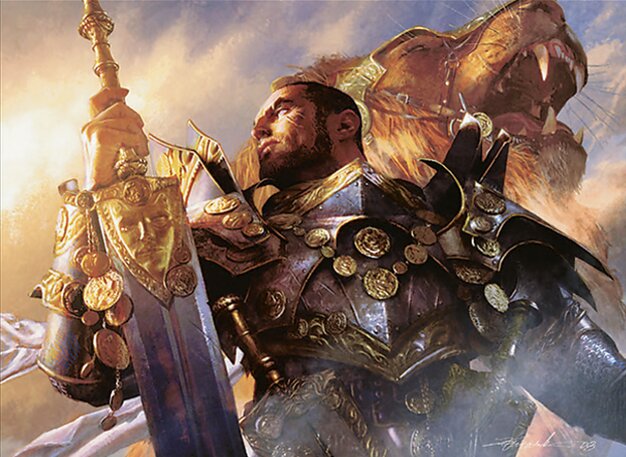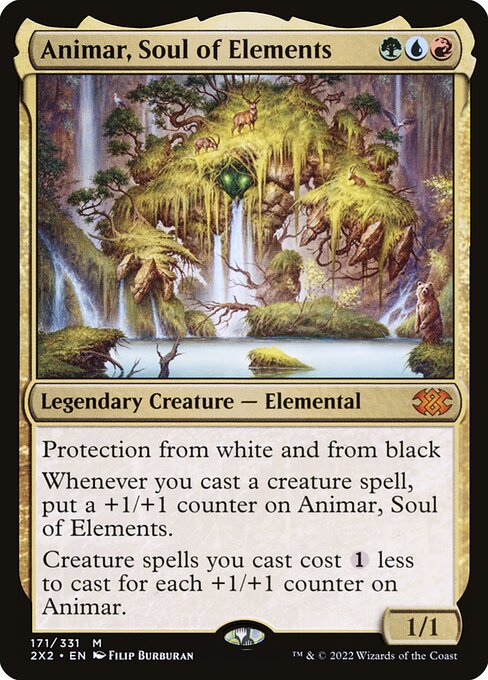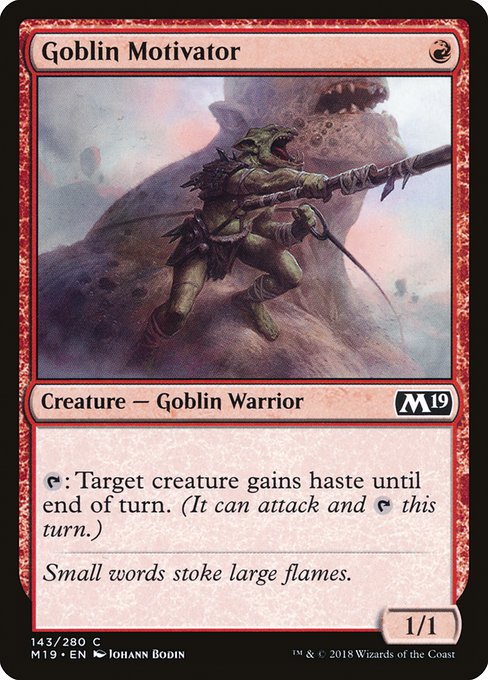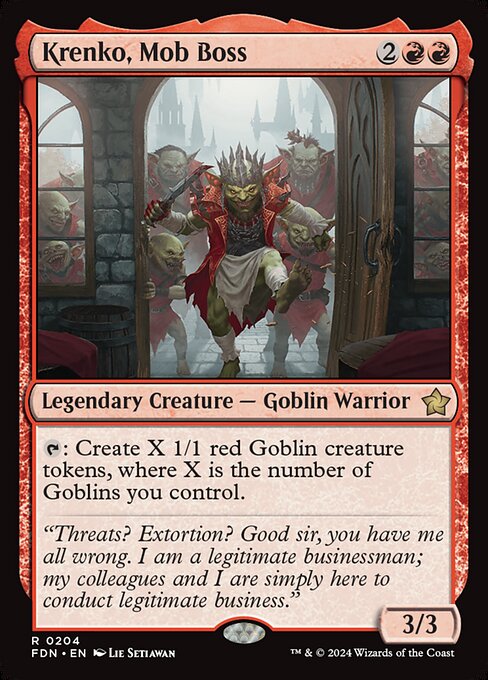Deck & Commander Strategies

Animar, Soul of Elements
Builds around casting big creatures cheaply with +1/+1 counters and cascade spells to generate value and board presence rapidly, ultimately winning through overwhelming creature strength and combos.

Krenko, Mob Boss
Focuses on creating a massive number of Goblin tokens quickly, buffing them for a wide and lethal swarm attack to overwhelm opponents.

Rafiq of the Many
A Voltron build that aims to equip and buff Rafiq for fast, potent single-target damage through swinging with a heavily augmented commander.

Thalia and The Gitrog Monster
Leverages landfall triggers and graveyard recursion to generate incremental advantage and board control, while slowing opponents with Thalia's taxing effects.
Gameplay Insights
- 1
Animar's cascade triggers were pivotal in maintaining card advantage and board development, allowing repeated land drops and creature recursion.
- 2
Krenko's early misplays and lack of mana acceleration delayed goblin token production, weakening the swarm strategy.
- 3
Thalia's effect of creatures and non-basic lands entering the battlefield tapped slowed aggressive strategies and favored slower, control-oriented gameplay.
- 4
Rafiq's Voltron plan required careful mana management and timing but was vulnerable to disruption and slower ramp from artifact sources.
- 5
The use of Treasure Nabber introduced an interesting dynamic, although it was ineffective early due to lack of artifact mana from opponents.
- 6
Players had to navigate around landfall and graveyard recursion synergies, balancing aggression with resource management.
Notable Cards
-

Animar, Soul of Elements
-

Eternal Witness
-

Treasure Nabber
-

Goblin Motivator
-

Thalia and The Gitrog Monster
-

Krenko, Mob Boss
-

Rafiq of the Many
-

Rampant Growth
-

Cultivate
Gameplay Summary
The game began with players ramping and setting up their mana bases, with each focusing on their unique strategies.
The Animar player quickly developed a board presence, casting large creatures and utilizing cascade effects to maintain momentum, including playing cards like Eternal Witness to recur lands and resources.
The Krenko player aimed to leverage goblin synergies but struggled initially with mana and tempo.
Meanwhile, the Thalia and The Gitrog Monster deck focused on landfall and graveyard recursion, carefully navigating the drawback of creatures and non-basic lands entering tapped.
Rafiq of the Many's Voltron strategy was slower to develop but planned to finish games with swift, powerful swings aided by equipment and buffs. A key turning point was Animar's cascade into Eternal Witness, allowing land recursion and further ramp, which helped maintain pressure and board development.
Krenko's attempt to flood the board with goblins was hindered by early misplays and lack of mana acceleration.
The Gitrog deck used land recursion and incremental advantage but was wary of the non-basic lands entering tapped effect.
Rafiq's deck showed potential to quickly close games but was slowed down by the pacing of artifact ramp and board presence.
The game highlighted the power of Animar's cascade and counter synergy as a dominant engine, while Krenko's goblin swarms struggled to keep up, and Thalia & Gitrog's control elements kept the game balanced.
The game likely leaned towards Animar's explosive creature combos as the main win condition.


























![Commander Versus Series: Deck Tech - Krenko v. Rhys v. Kangee v. Yeva [MTG Multiplayer] thumbnail](https://i.ytimg.com/vi/dUX1ieofYg0/sddefault.jpg)
![Commander Versus Series: Krenko v. Rhys v. Kangee v. Yeva [MTG Multiplayer] thumbnail](https://i.ytimg.com/vi/7UX55YdwDR4/sddefault.jpg)




![Commander VS S1E2: Keranos v. Marchesa v. Animar v. Ruric Thar [MTG Multiplayer] thumbnail](https://i.ytimg.com/vi/zQYgG45Yzuk/sddefault.jpg)







